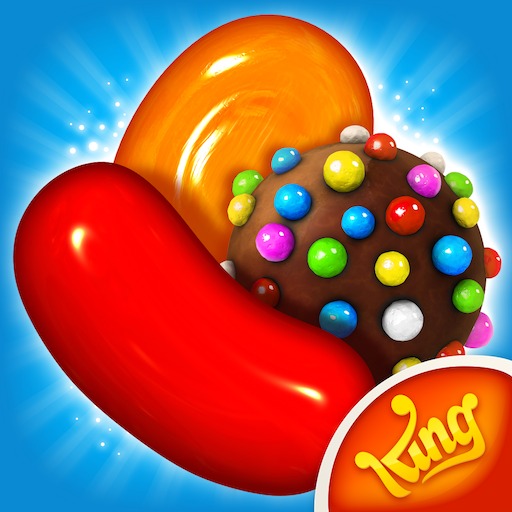
Candy Crush Saga
All trademarks belong to their respective owners.Popular Now
 Garena Free Fire: Kalahari
Garena Free Fire: Kalahari
 Sonic the Hedgehog™ Classic
Sonic the Hedgehog™ Classic
 Grand Theft Auto V
Grand Theft Auto V
 Genshin Impact
Genshin Impact
 BeamNG.drive
BeamNG.drive
 Valorant
Valorant
 Candy Crush Saga
Candy Crush Saga
 Fall Guys
Fall Guys
 Auto X Drift Racing 3
Auto X Drift Racing 3
 Free Fire
Free Fire Beyond the Sweet Facade: Unpacking the Genius of Candy Crush Saga’s Enduring Grip
At first glance, Candy Crush Saga seems deceptively simple: a vibrant cascade of colorful candies, inviting you to swipe and match three or more. Yet, beneath this sugary veneer lies a meticulously crafted masterpiece of psychological engineering and subtle strategic depth that has captivated billions. Far from being just another casual mobile game, Candy Crush Saga represents a masterclass in user engagement, a brilliant fusion of intuitive mechanics, addictive reward systems, and artful level design that continues to hold players in its sweet embrace years after its explosive debut. It’s a game that doesn’t just entertain; it subtly trains your brain while keeping you hooked on the promise of just “one more level.”
The Illusion of Simplicity: Unveiling Strategic Layers
The core match-3 mechanic of Candy Crush Saga is immediately accessible to anyone, regardless of gaming experience. This low barrier to entry is a key part of its widespread appeal. However, as players progress, the game steadily unveils layers of complexity, transforming what seems like a casual distraction into a genuine strategic puzzle.
- The Power of Special Candies and Combos: The true strategic depth emerges with the introduction of special candies. Matching four candies in a row creates a Striped Candy, clearing an entire row or column. Matching five in a ‘T’ or ‘L’ shape yields a Wrapped Candy, detonating a 3×3 area. The ultimate prize, matching five in a row, creates a Color Bomb, capable of obliterating all candies of a chosen color. The real magic, and the core of high-level play, lies in combining these specials (e.g., a Striped and Wrapped Candy combo creates a massive cross-blast), leading to cascading reactions that clear vast sections of the board. Mastering these combinations is the key to conquering later levels.
- Navigating Obstacles and Blockers: The game consistently introduces new blockers and obstacles, each requiring a different approach. From clearing layers of Jelly to breaking through Licorice Swirls, navigating persistent Chocolate that spreads across the board, or defusing ticking Candy Bombs before they explode, every level presents a unique puzzle. Players must prioritize targets, anticipate future moves, and often sacrifice immediate matches to set up more powerful combos to overcome these challenges.
- Limited Moves, Endless Possibilities: Most levels come with a strict move limit. This constraint forces players to think several steps ahead, optimizing each move for maximum impact. Every swipe becomes a calculated decision, weighing the immediate reward against the potential for setting up a game-winning combo. This pressure transforms casual matching into a focused, deliberate exercise in efficiency and foresight.
King’s Psychological Mastery: The Art of the Perpetual Hook
The developer, King, didn’t just create a game; they engineered an experience that expertly taps into fundamental human psychological principles, creating an almost irresistible pull.
- The “Flow State” Phenomenon: Candy Crush Saga excels at inducing a flow state – that optimal zone of engagement where challenge meets skill, and players become fully immersed, losing track of time. Levels are designed to be just difficult enough to be challenging without being frustrating, constantly pushing players to the edge of their abilities before rewarding them, pulling them deeper into the experience.
- Variable Reward Schedule: Like a slot machine, Candy Crush Saga employs a variable ratio reinforcement schedule. Wins are unpredictable, but the potential for a spectacular cascade or a hard-earned victory keeps players coming back. This intermittent reinforcement is incredibly powerful, as the brain seeks to replicate the thrilling dopamine rush of an unexpected win, fueling the “just one more try” compulsion.
- Positive Reinforcement Overload: The game showers players with positive reinforcement. Every match is accompanied by satisfying sound effects, vibrant animations, and encouraging voice lines (“Sweet!”, “Sugar Crush!”, “Delicious!”). Powerful combos trigger dazzling visual fireworks and chain reactions. This constant positive feedback loop provides a continuous stream of mini-rewards, reinforcing the player’s actions and encouraging continued play.
- The Near Miss Phenomenon: Perhaps one of King’s most brilliant psychological tactics is the “near miss.” Frequently, after failing a level, the game will show a few extra “free” moves that would have led to victory. This visual “proof” that success was just a hair’s breadth away (“You almost made it!”) is incredibly motivating, convincing players that success is imminent if they just try again.
- Social Encouragement (and Gentle Pressure): While less prominent now, early iterations heavily leveraged social connections. Asking friends for lives or seeing their progress on leaderboards added a layer of social proof and gentle competition, subtly urging players to keep up with their peers.
Level Design as a Dark Art: The Invisible Hand of Challenge
Unlike many other match-3 games that rely on procedural generation, every single one of Candy Crush Saga’s thousands of levels is meticulously hand-crafted. This allows for a level of precision and psychological manipulation that procedural generation simply can’t match.
- Carefully Paced Introduction of Mechanics: New obstacles, special candies, and game modes are introduced slowly and deliberately. Early levels teach basic mechanics, then gradually combine them in increasingly complex ways. This ensures players are never overwhelmed but are constantly learning and adapting.
- The “Sucker Level” and “Breather Level” Rhythm: Game designers intentionally weave a rhythm of difficulty. Harder “sucker levels” are often followed by easier “breather levels,” providing a sense of accomplishment and preventing burnout. This ebb and flow manages player frustration and keeps them engaged in the long term.
- Subtle Monetization Funnels: While players can progress for free, difficulty spikes are strategically placed to encourage the use of in-game boosters or extra moves, which can be purchased with real money. This free-to-play model is expertly balanced to provide a path for all players while subtly incentivizing purchases for those who want to overcome challenges faster. The game is designed to be beatable without spending, but tempting enough to make spending appealing during moments of frustration.
A Cultural Phenomenon Beyond Gaming
Candy Crush Saga transcended the traditional gaming audience to become a global cultural phenomenon. Its casual appeal meant it was played by everyone from teenagers to busy professionals and even grandparents.
It became the quintessential “lunch break” game, the “commute” distraction, and the universal pastime for moments of downtime. Its widespread presence on social media and its simple, recognizable aesthetic cemented its place in popular culture. Its lasting legacy has profoundly influenced the mobile gaming landscape, proving that deeply engaging and profitable games can be built on accessible, yet strategically rich, mechanics.
In essence, Candy Crush Saga is more than just a game with colorful candies. It’s a masterclass in psychological design, a testament to the power of well-crafted game mechanics, and a fascinating case study in how a seemingly simple concept can achieve enduring global dominance through sheer, brilliant execution.
What’s the most surprising thing you’ve learned about Candy Crush Saga’s design after playing it?
Rating
PROS
- Candy Crush Saga is free to download
- Candy Crush Saga is very addicting
- Players can download Candy Crush Saga and play it for as long as they want
- The game has a lot of replayability
- Players will never get bored of playing Candy Crush Saga
CONS
- The game has a lot of replayability
- The player’s progress in Candy Crush Saga can be lost, if their phone breaks
- There is a lot of waiting time in Candy Crush Saga
- Candy Crush Saga is expensive
- There are ads in Candy Crush Saga
- The game is inappropriate for young children
